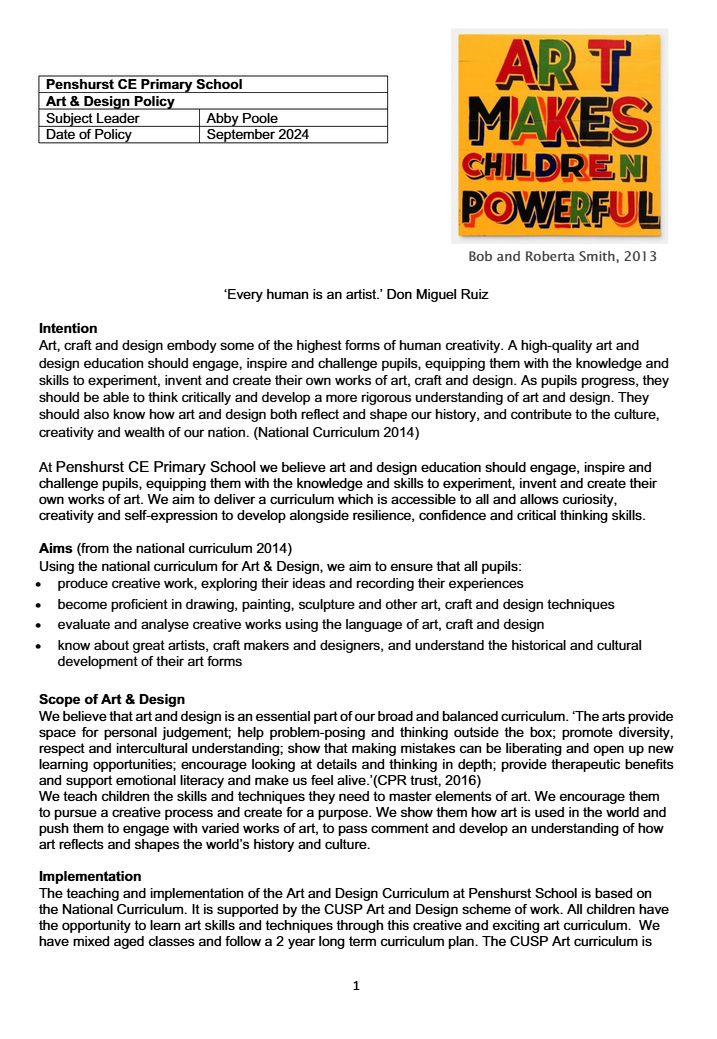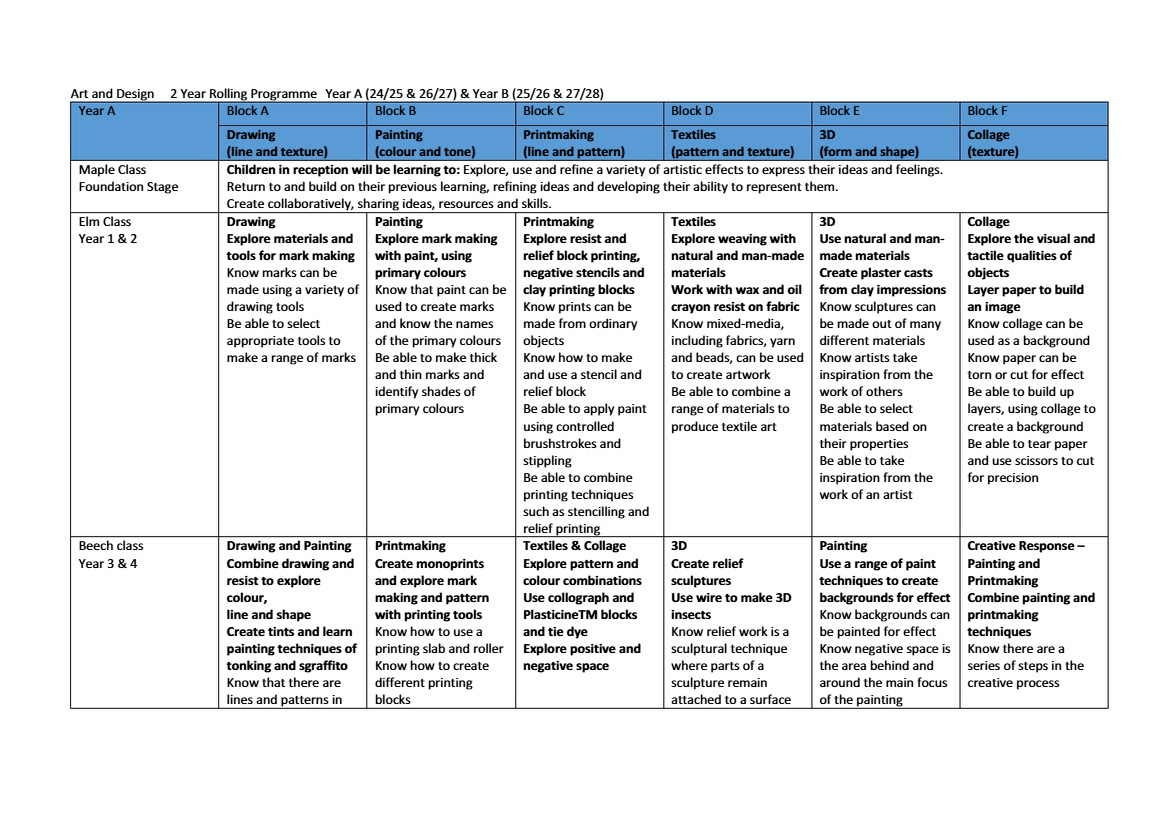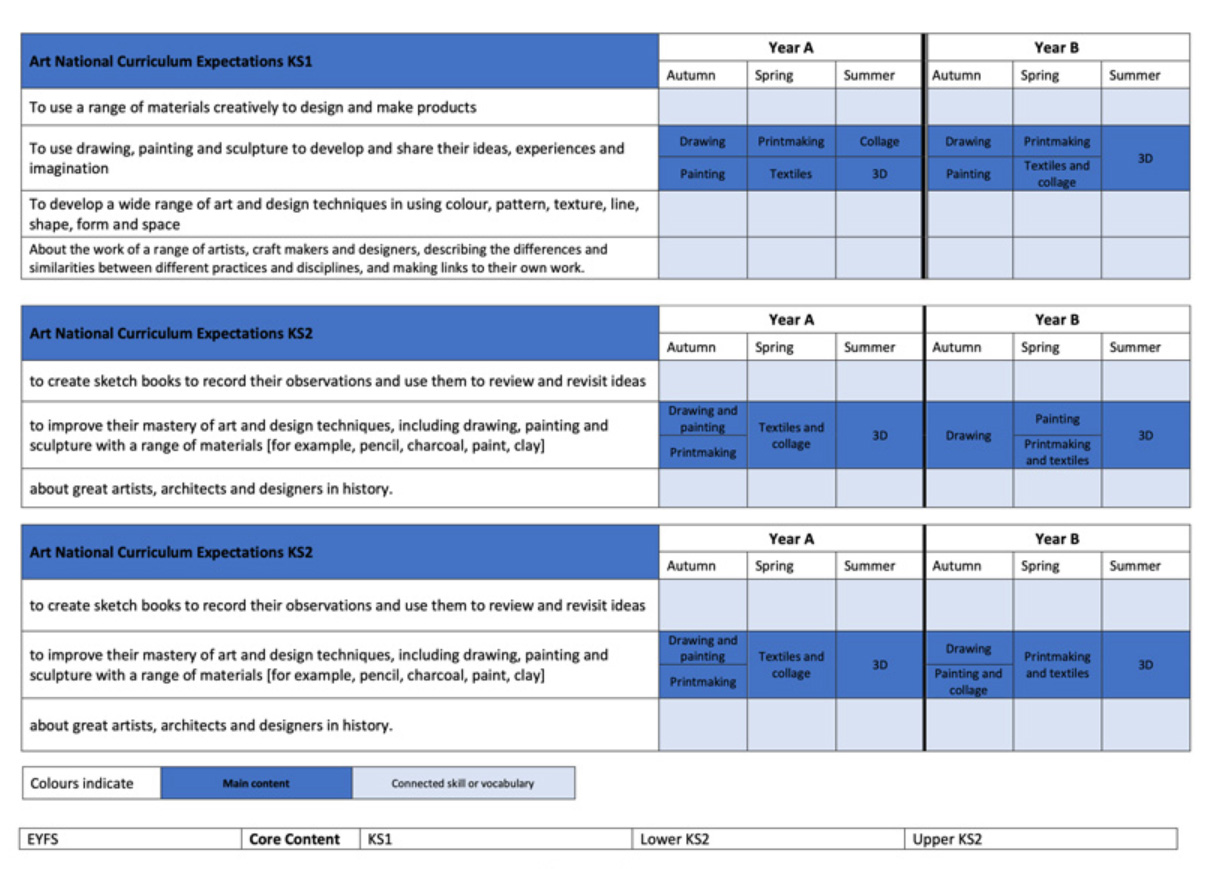Art & Design
Intention
Art, craft and design embody some of the highest forms of human creativity. A high-quality art and design education should engage, inspire and challenge pupils, equipping them with the knowledge and skills to experiment, invent and create their own works of art, craft and design. As pupils progress, they should be able to think critically and develop a more rigorous understanding of art and design. They should also know how art and design both reflect and shape our history, and contribute to the culture, creativity and wealth of our nation. (National Curriculum 2014)
At Penshurst CE Primary School we believe art and design education should engage, inspire and challenge pupils, equipping them with the knowledge and skills to experiment, invent and create their own works of art. We aim to deliver a curriculum which is accessible to all and allows curiosity, creativity and self-expression to develop alongside resilience, confidence and critical thinking skills.
Aims (from the national curriculum 2014)
Using the national curriculum for Art & Design, we aim to ensure that all pupils:
- produce creative work, exploring their ideas and recording their experiences
- become proficient in drawing, painting, sculpture and other art, craft and design techniques
- evaluate and analyse creative works using the language of art, craft and design
- know about great artists, craft makers and designers, and understand the historical and cultural development of their art forms
Scope of Art & Design
We believe that art and design is an essential part of our broad and balanced curriculum. ‘The arts provide space for personal judgement; help problem-posing and thinking outside the box; promote diversity, respect and intercultural understanding; show that making mistakes can be liberating and open up new learning opportunities; encourage looking at details and thinking in depth; provide therapeutic benefits and support emotional literacy and make us feel alive.’(CPR trust, 2016)
We teach children the skills and techniques they need to master elements of art. We encourage them to pursue a creative process and create for a purpose. We show them how art is used in the world and push them to engage with varied works of art, to pass comment and develop an understanding of how art reflects and shapes the world’s history and culture.
Implementation
The teaching and implementation of the Art and Design Curriculum at Penshurst School is based on the National Curriculum. It is supported by the CUSP Art and Design scheme of work. All children have the opportunity to learn art skills and techniques through this creative and exciting art curriculum. We have mixed aged classes and follow a 2 year long term curriculum plan. The CUSP Art curriculum is organised into blocks with each block covering a particular set of artistic disciplines, including drawing, painting, printmaking, textiles, 3D and collage. Vertical progression in each discipline has been deliberately woven into the fabric of the curriculum so that pupils can revisit key disciplines throughout their Primary journey at increasing degrees of challenge and complexity. In addition to the core knowledge required to be successful within each discipline, the curriculum outlines key aspects of artistic development in the Working Artistically section. Each module will focus on developing different aspects of these competencies. This will support teachers in understanding pupils’ development as artists more broadly, as well as how successfully they are acquiring the taught knowledge and skills.
Impact
We consider accurate and focused assessment as the cornerstone of high quality teaching. It allows learning to be planned and taught accurately as well as meeting the needs of the children and ensuring high levels of expectation and support.
The culture at Penshurst CE Primary School is one of continually using what we know in order to move on children’s learning. This formative assessment happens all the time and may not necessarily be recorded. Teachers and other adults will use the information gathered through formative assessment to address gaps and to provide additional challenge for children as required and appropriate. This is most effective when done immediately and at the point of learning.
-
PDF Downloads




